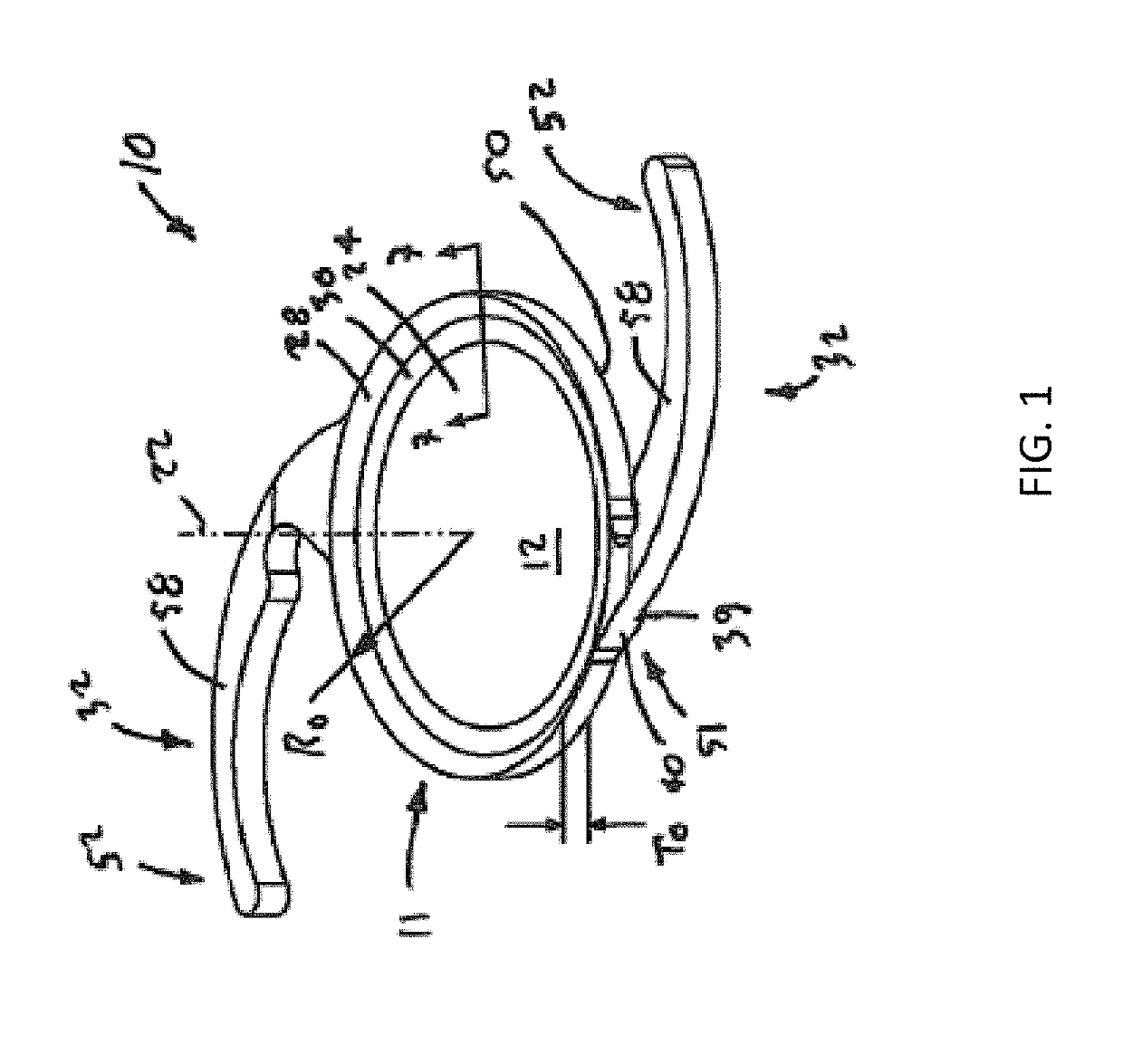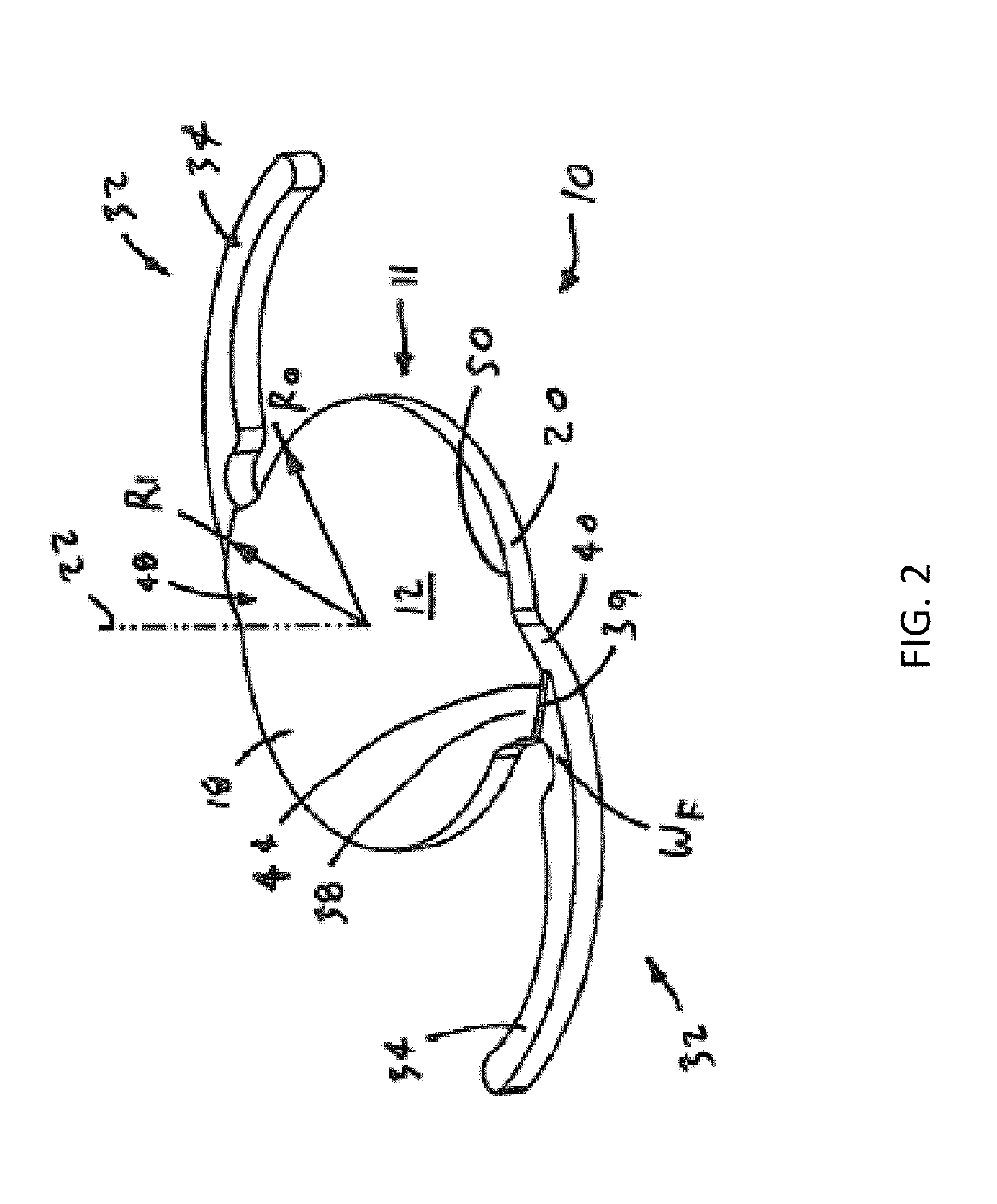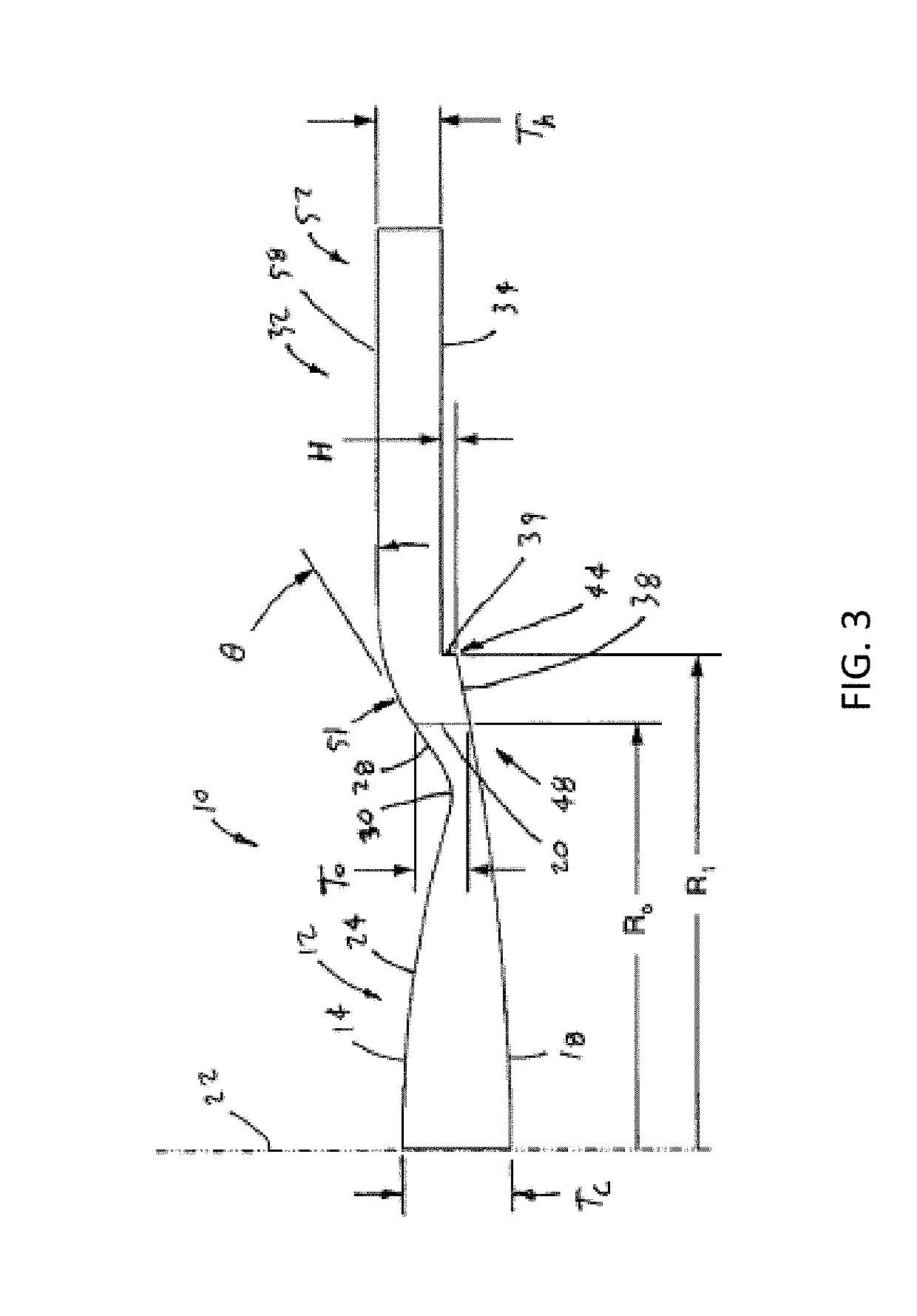Methods and systems for changing a refractive property of an implantable intraocular lens
a technology of refractive properties and implants, which is applied in the field of methods and systems for changing the refractive properties of implantable intraocular lenses, can solve the problems of reducing the perception of blue colors, vision loss, and potentially blinding
- Summary
- Abstract
- Description
- Claims
- Application Information
AI Technical Summary
Benefits of technology
Problems solved by technology
Method used
Image
Examples
Embodiment Construction
[0041]In many embodiments, a method of altering a refractive property of a crosslinked acrylic polymer comprises generating a light beam with a light source; and irradiating the crosslinked acrylic polymer with the light beam, thereby producing a predetermined change in a refractive property of the crosslinked acrylic polymer. Preferably, irradiation with the laser light beam results in a change in refractive index of the cross-linked acrylic polymer, thereby causing the predetermined change in the refractive property. In some embodiments, a first change in the refractive index is negative during a first time period after irradiation and a second change in the refractive index is positive in a second time period after irradiation. In some embodiments, a change in refractive index of the cross-linked acrylic polymer relative to the pre-irradiation refractive index at a location within the crosslinked acrylic polymer is linearly related with a total energy of the irradiation with the ...
PUM
| Property | Measurement | Unit |
|---|---|---|
| Length | aaaaa | aaaaa |
| Time | aaaaa | aaaaa |
| Time | aaaaa | aaaaa |
Abstract
Description
Claims
Application Information
 Login to View More
Login to View More - R&D
- Intellectual Property
- Life Sciences
- Materials
- Tech Scout
- Unparalleled Data Quality
- Higher Quality Content
- 60% Fewer Hallucinations
Browse by: Latest US Patents, China's latest patents, Technical Efficacy Thesaurus, Application Domain, Technology Topic, Popular Technical Reports.
© 2025 PatSnap. All rights reserved.Legal|Privacy policy|Modern Slavery Act Transparency Statement|Sitemap|About US| Contact US: help@patsnap.com



